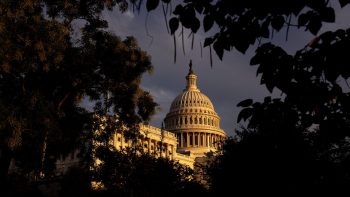‘Participatory budgeting’ goes to the White House
Representatives from Vallejo, California are visiting the White House Tuesday to talk about “participatory budgeting,” a unique democratic process where residents propose and choose city-funded projects.
Residents in this small San Francisco Bay Area city voted-in participatory budgeting after the city went through a bankruptcy in 2008. A small portion of the city’s overall budget is allocated to the process, made available through a sales tax. This year, residents have $2.4 million to work with.
That pot of money has sparked ideas. On a weekday evening in February, about 60 residents broke up into small groups at Glen Cove elementary school for a brainstorming session. They proposed everything from more street lighting to a day-use center for the homeless. One 28-year old resident proposed an outdoor fitness center.
“Similar to Venice Beach, like a ‘muscle beach’ type, but at the waterfront,” says Vincent Trujillo.
Other Vallejo residents want a public bank, more ice cream trucks and meditation classes to end student truancy.
“Often participatory budget events are quite cathartic,” says Alea Gage, an administrative analyst at the city manager’s office who acts as a liaison for the participatory budging process.
Gage says residents may even have fun while getting closer to government.
“At our final [brainstorming] assembly… we had Motown tunes on, and we even got some of our city council members to boogey a little bit,” says Gage.
Vallejo residents are now in the process of wittling down 620 ideas. The projects go for a city-wide vote in October after nine months of work shopping. Last year, potholes and street repair got the most city-wide votes.
“Potholes represent a basic level of service, and they indicate quality of life,” says Gage.
But participatory budgeting is not just repairing streets. City Manager Dan Keen says it’s also restoring confidence.
“What we earned was some good will, from… a segment of the community that ‘the city cares about us, they want to know what we have to say, and when we give them our feedback, they followed through and they did what we asked,'” says Keen.
Keen says at first, he didn’t believe residents would show up for something as mundane as city budgeting.
“I was dead wrong about that,” he says.
One city council member says residents need to use the process or they might lose it. Less than 600 people showed up for the brainstorming sessions.
The challenge for them is fitting their imagination inside city limits.
There’s a lot happening in the world. Through it all, Marketplace is here for you.
You rely on Marketplace to break down the world’s events and tell you how it affects you in a fact-based, approachable way. We rely on your financial support to keep making that possible.
Your donation today powers the independent journalism that you rely on. For just $5/month, you can help sustain Marketplace so we can keep reporting on the things that matter to you.


















